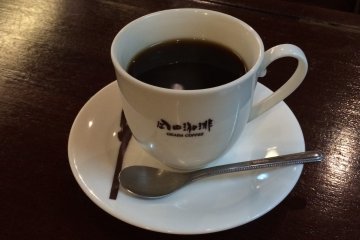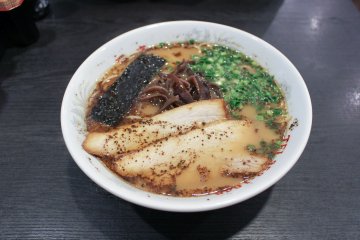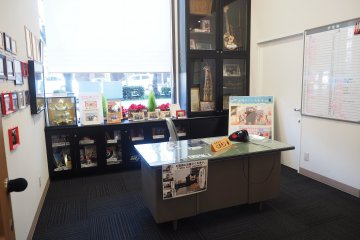
Kuil Hase Kamakura di Bulan Januari
Larry KnipfingKuil Hase di Kamakura pada Januari, sebuah akhir musim gugur dan awal musim semi.

Kumamoto Castle is the third largest castle in Japan and one of its most popular historic sites. Originally built in the early 1600s by renowned castle architect Kato Kiyomasa, the fortification was burnt during the Seinan Civil War in 1877 and again sustained damage in the powerful earthquakes of 2016.
Kumamoto Castle sustained heavy damage during the 2016 earthquake. During the summer of 2021, the inner keep reopened after a 5-year reconstruction period. However, sitewide renovations are expected to continue until around 2038.
Though an earlier fortification had stood on the site since the mid-1400s, the foundations for the current incarnation of Kumamoto Castle were first laid in 1600 by local warlord Kato Kiyomasa. Having studied castle design during Toyotomi Hideyoshi’s Korea campaign, Kato constructed some of the most impressive defensive walls in the nation at his new fortress. The Kato family was replaced as lords of the region a mere half-century later and the castle came under the control of the Hosokawa clan. During the Satsuma Rebellion of 1877, samurai leader Saigo Takamori laid siege to the fortress. Despite his efforts, the inhabitants outlasted him, though the main keep mysteriously burned during the struggle. A new main tower was built in 1960, which houses a history museum and an observation deck on the top level.
Kumamoto Castle is one of the top spots for hanami, or cherry blossom viewing, in late March and early April. Around 800 sakura bloom around the Kumamoto Castle Park, drawing thousands of picnickers to enjoy the colorful spring scene.
Visitors to the city can learn a bit more about Kato’s castle building techniques, among other things, at the Wakuwaku-za, a cultural complex located in the Josaien complex at the base of the castle. An assortment of shops and restaurants make this a good stop for locally-themed souvenirs or lunch; local delicacies here include horsemeat croquettes, spicy lotus root tempura, and a vermicelli noodle dish known as taipien.
In April 2016, the Mashiki district of Kumamoto city was struck by two severe earthquakes. The disasters caused damage to several of the original watchtowers, and many of the rooftiles on the main keep were dislodged. The castle is currently closed to visitors while a 20-year renovation process is carried out. Specialists are attempting to use traditional methods and techniques to restore the castle, making it a vital project in understanding the castle construction of the feudal era. However, parts of the main keep and grounds will open for a limited time during the World Rugby Championships in October 2019.
Kumamoto Castle is the third largest castle in Japan and one its most popular historic sites. Originally built in the early 1600s by renowned castle architect Kato Kiyomasa

Kuil Hase di Kamakura pada Januari, sebuah akhir musim gugur dan awal musim semi.

Saya rasa kami beruntung -- benar-benar hari yang indah! Jadi dari pada menghabiskan waktu kami di dalam museum benteng, kami menghabiskan waktu kami untuk menjelajahi pekarangan benteng dengan semua jalan yang cantik itu baik di dalam maupun di luar dinding benteng, yang sejujurnya sama mengesankannya dengan benteng itu sendiri. Kami mendapat semua jenis pemandangan berbeda dan sulit untuk menentukan yang mana yang paling disukai.

Kastil Kumamoto, kastil terbesar di Jepang yang memberikan atmosfer seperti di film-film tentang Samurai

"Pemilik coffee shop Jepang menciptakan momen terbaik untuk kopi yang paling baik," Mr Toshiro Sano, anggota dari Japanese Coffee Club berkata padaku. Ini adalah gaya khas Jepang untuk meneliti asal biji kopi, serta tingkat pemanggangan, penggilingan, suhu ekstraksi, desain cangkir kopi dan bahkan suasana toko. Setelah rumah kopi pertama di dunia didirikan di Turki pada abad ke-15, banyak negara yang mendirikan dengan gaya mereka sendiri, seperti espresso disajikan di bar di Italia, coffee drip saat makan malam di Amerika Serikat serta kaya rasa manis ala kopi Vietnam. Akhir ini ada gerakan untuk mempromosikan kopi ala Jepand di seluruh dunia. The Japan Coffee Society aktif mendorong studi budaya kopi & sejarah serta membangun jaringan sosial bagi pecinta kopi. Pada saat penulisan mereka merencanakan sebuah lokakarya yang disebut "Menghargai kopi di Kumamoto" pada bulan Desember. Aku punya kesempatan untuk pergi ke Okada Coffee mengalami Jepang kopi gaya Kamitori di pusat kota Kumamoto. Didirikan pada tahun 1945, rumah kopi ini kaya akan sejarah. Suasana pencahayaan diatur dalam interior dark chocolate yang terkoordinasi, serta musik jazz yang menenangkan menciptakan suasana "adult" dan mewah. Dari penghargaan mereka akan ketenangan, Anda dapat menyimpulkan bahwa pelanggan di sini meluangkan waktu untuk menikmati kopi. Ibuku mencicipi kopi drip mereka dan berkata, "benar-benar hebat". Dia mencintai kopi dan berbagi cerita tentang waktunya saat SMA ketika dia pergi ke coffee shop seperti wanita dewasa. Cappuccino saya terlihat seperti kopi ala Wina dengan kayu manis, rasa susu yang kaya oleh kehalusan rempah-rempah. Bahkan orang-orang yang tidak terbiasa dengan kopi akan menyukainya. Didampingi oleh kue Mont Blanc, dengan chestnutnya, adalah kombinasi yang menarik dengan meringue renyah yang kontras dengan ketebalan krim chestnut. Ini adalah waktu yang sangat santai dan jauh dari kesibukan. Turun dari lantai atas ruang makan, Anda dapat melihat toko yang diisi dengan biji kopi, berbagai peralatan kopi serta kue. Aroma dari biji kopi sangat tak tertahankan. Mereka memiliki berbagai jenis biji kopi dari seluruh dunia, masing-masing disertai dengan jenis penjelasan rinci yang akan memuaskan penikmat cerdas. Saya paling terkesan dengan berbagai peralatan kopi pada layar, termasuk cangkir, pot dan pabrik kopi. Saya juga terkejut melihat kue kismis Napoleon dijual, seperti yang saya makan saat masa kanak-kanak; bukti bahwa Okada Coffee adalah baker yang baik juga. Ibuku membeli juga potongan kue Mont Blanc untuk dibawa pulang. Kopi Okada memiliki beberapa toko di Kumamoto serta Singapura dan mereka adalah duta gaya ngopi ala Jepang baik di dalam maupun di luar Jepang.

Tengaiten (天外天) menyediaan ramen khas Kumamoto - ramen tonkotsu dan bawang di tengah kota.

Dibuka sejak tahun 1957, Kokutei (黒亭) adalah salah satu kedai ramen paling terkenal di Kumamoto yang menyajikan ramen bergaya lokal Kumamoto.

Lafcadio Hearn was born in Greece in 1850 to a father from Ireland and a mother from Greece. He was a British explorer who came to Japan in the 18th century and became a well-known author who introduced aspects of Japanese culture to the western world . In addition to his thirty other publications, Hearn was best known for his short story book "" Kwaidan "". His writings have been praised for their authentic views of Meiji-era Japan, unbiased from its Western origins. He lived in Matsue for about a year of his life and his former residence is now open to the public, along with a museum next door dedicated to his work and person.

Kumamon Square is the" "office" "of the famous mascot Kumamon of Kumamoto Prefecture. The bear mascot was created in 2011 to improve public relations in Kumamoto. Kumamon works as an official of the prefecture and is with the dual roles of sales manager and sales manager Happiness Manager for Kumamoto Prefecture. In Kumamon Square there is an exclusive souvenir shop, there are food stalls and an event stage. In the square, visitors have numerous opportunities to take photos and experience Kumamon up close. There are also live shows to which Kumamon dances. Kumamon Square is full of trophies the popular bear received from all over Japan.

Suizenji Jojuen is a traditional Japanese landscape garden that was laid out in the late 1600s. Due to its enormous size of 64 hectares, it is often referred to as Suizenji Park. Originally it was planned by Prince Hosokawa Tadatoshi to enjoy tea there in peace Its name comes from a former Buddhist temple there, while the garden now houses a Shinto shrine in which the Hosokawa family is buried. The garden is supposed to represent the 53 stations of the old Tokaido Street, a former trade route that ran between Tokyo and Kyoto. The highlight is the miniature representation of Mount Fuji, as well as a reduced form of the Fushimi Inari Shrine in Kyoto. The tea house there originally comes from the Imperial Palace in Kyoto and is open to the public. The Suizenji Jojuen is located in the city of Kumamoto on the southern main island of Kyushu and, along with the Kumamoto Castle, is one of the city's main attractions.